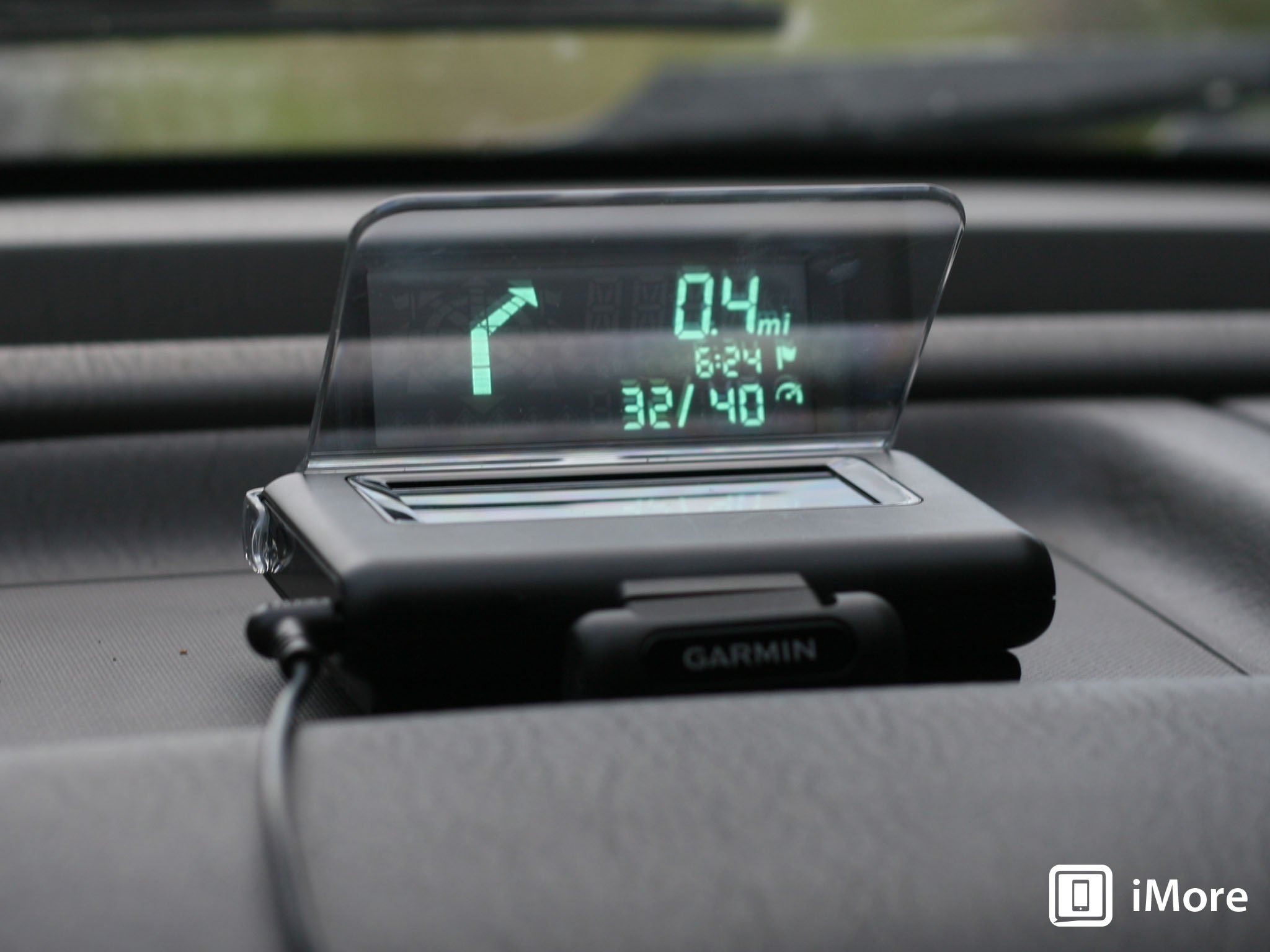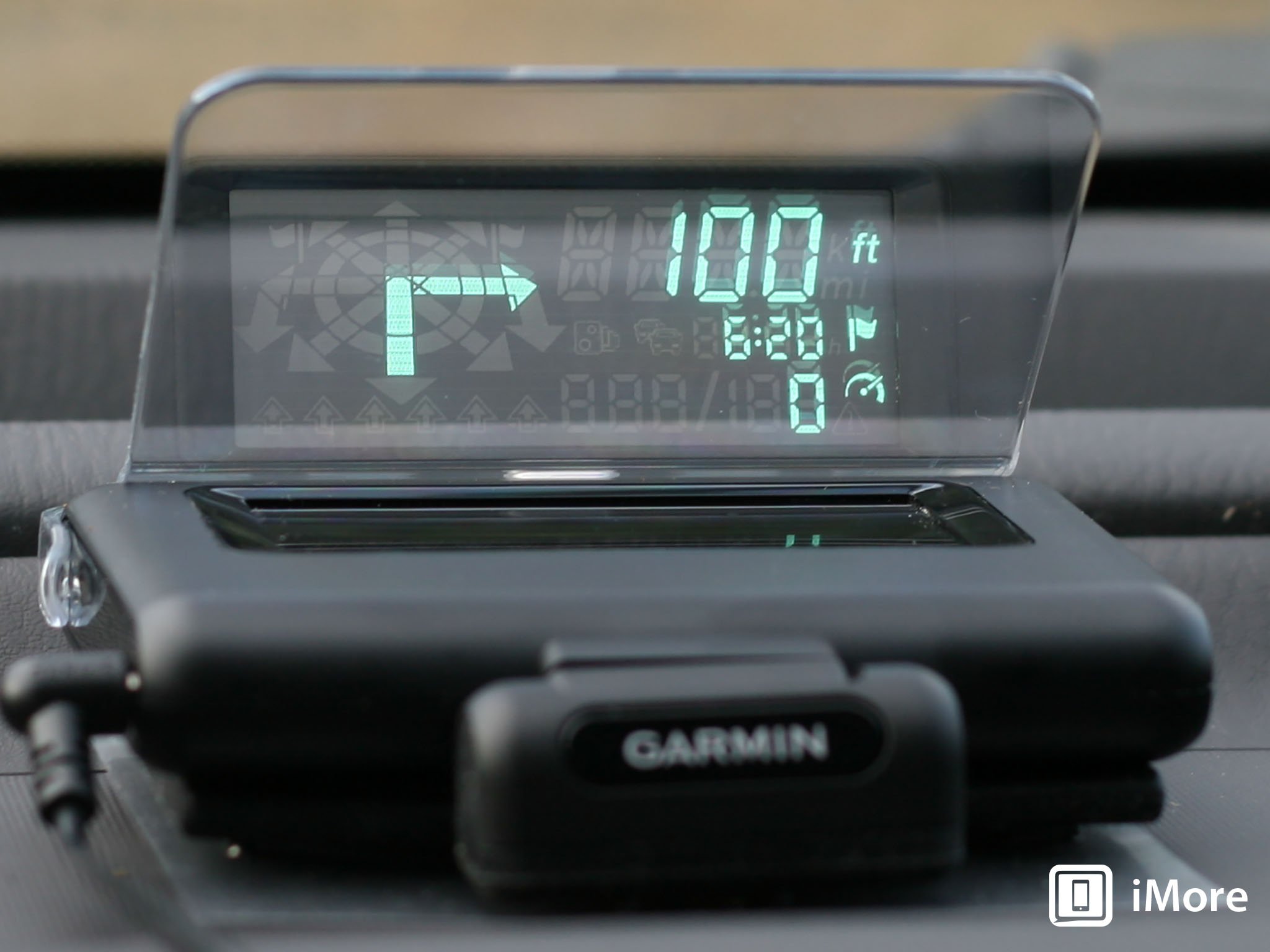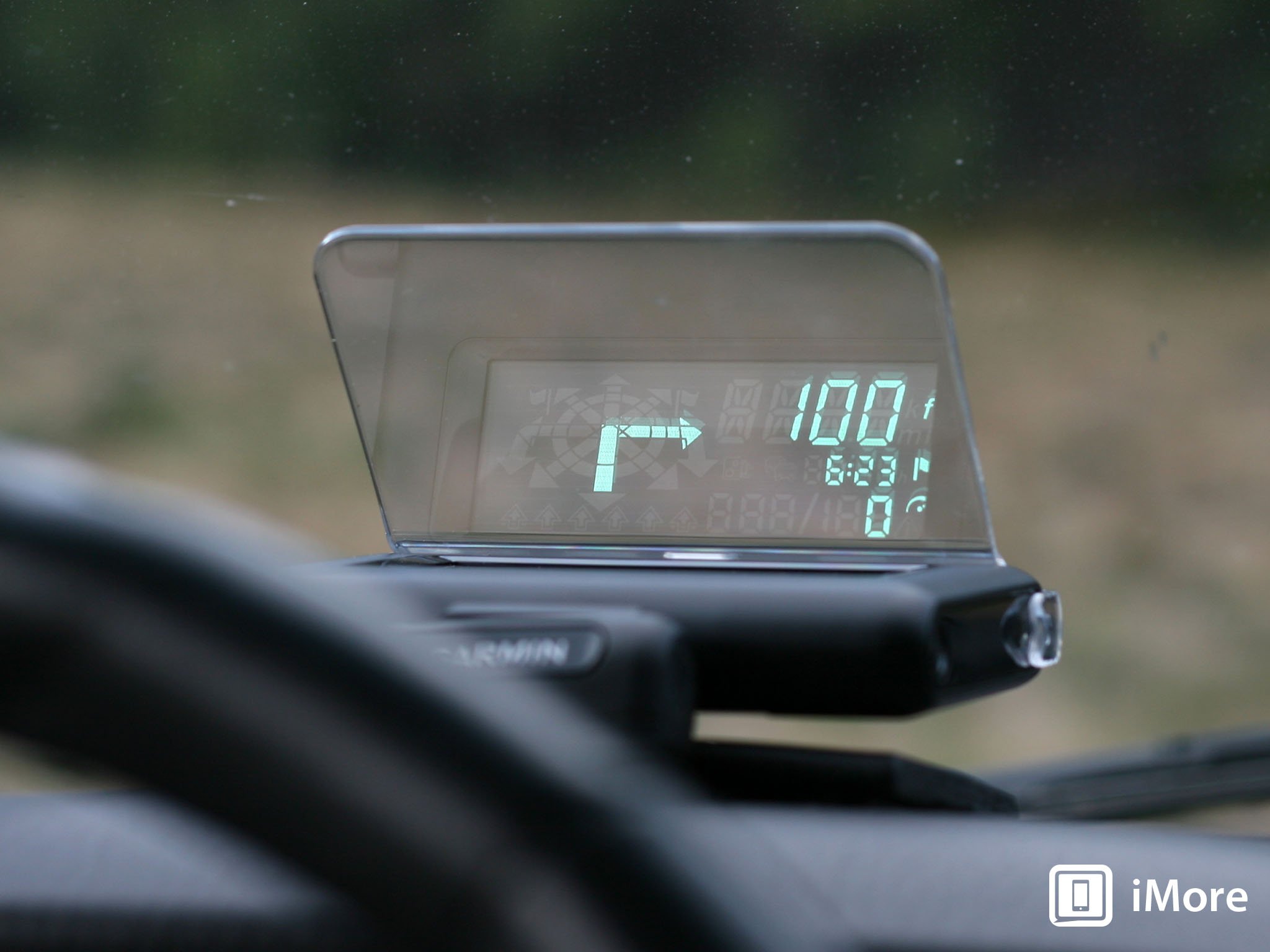Up to now, Heads Up Displays have been limited to luxury cars and jet fighters. Now Garmin's putting a HUD in the reach of anyone with a smartphone running Garmin's navigation software.
When it comes to getting from point A to point B in your car, it's nice to have a phone that knows the way. Garmin, the maker of GPS systems and mapping software, has developed a new Bluetooth accessory that should make it easier to get there: the HUD (short for Heads Up Display). Coming in September, the HUD works with iOS, Android and Window Phone 8 devices alike and gives your automobile a taste of jet fighter technology.
Garmin's HUD rests on your dashboard. It measures 4.25 x 3.46 x .73 inches and weighs 9.77 ounces, making it larger and heftier than an iPhone 5. It's clad in black plastic, and the top of the device houses a Vacuum Fluorescent Display (VFD) that projects a visible image onto your windshield.
The HUD is powered using a cable that plugs into the cigarette lighter or 12 volt power outlet in your vehicle; that adapter has a blue LED to show when it's powered, and includes a USB power adapter that outputs 5 volts at 2.1 amps. Using GPS on a phone is a power-hungry activity, so it's nice to be able to keep the phone's battery topped off.
I tested the HUD with Garmin's Navigon software installed on an iPhone 5 running iOS 6. The HUD synced with the iPhone like any other Bluetooth device, and didn't impair the iPhone from pairing with my car's stereo or other equipment. The HUD works with Garmin's own navigation software - on the iPhone, that includes Garmin StreetPilot Onboard and Navigon. It's worth noting that the HUD does not work with Apple's own Maps software, nor does it work with Google Maps or any other navigational software.

The HUD displays its imagery in bright green fluorescent characters - there are some red ones, too - warnings, in particular, to let you know when you're exceeding the speed limit or if there are known traffic cameras ahead, for example (both of these warnings are optional). If you're traveling on a freeway or multilane highway, it'll also show you which lane you should be in.
Garmin rates the HUD's brightness at 7,700 cd/m2. I don't have equipment to verify, but I can tell you the HUD incorporates an ambient light sensor that automatically adjusts brightness for day and night. It was easily visible at all times of day, and the only time I had any trouble was if there was excessive glare right on the windshield near the HUD itself.
The images are projected directly onto the windshield and are visible using a transparent reflective film included in the package, which Garmin instructs to install by thoroughly wetting the inside of the windshield, sliding the film around to the right position and pressing out any bubbles in the process (sort of like applying a screen protector to your smartphone, minus the wetting part). I opted not to use the film, since we're a two-car household, and only one film is included. Fortunately, Garmin accommodates by including an angled transparent reflector lens (pictured above) which clips directly on to the HUD. That lens can move around with the HUD.
The HUD's base is flexible - a hinge lets you pivot and twist the HUD to get the best reflected angle on your windshield. The base bends a little and is rubberized and a bit sticky on the bottom, to help keep from slipping on different dashboard surfaces (it's removable without any residue, and restickable - just clean the dashboard before applying).
Garmin made the bizarre decision to make the HUD and the base one integrated unit, so I couldn't just unseat the HUD and toss it in a glove box for security without taking the whole base along with it. That meant needing to line up the HUD again just right the next time I used it.

Once the software has a destination set, the HUD will display in green turn-by-turn directions with distance to the next waypoint (turn right in 500 feet; drive straight for 2.1 miles), along with estimated time of arrival, details on speed limit and your speed; and the optional settings I mentioned before. Paired with the Garmin software's voice information, it's reassuring to see and hear where you're supposed to go before you get there.
One important benefit of using the HUD and Garmin's software: Garmin's software is not dependent on a connection to the Internet, unlike Apple Maps. Map data is stored in a built-in database. So as long as the phone's GPS hardware can get a fix on your geographical location, it'll work. If you suffer with spotty cellular data service, as I sometimes do, it's reassuring to know that you'll be able to find your way around regardless.
Unfortunately, the pricing of the HUD doesn't make much sense. Garmin sells the device for $149, and it's functionally useless without the addition of StreetPilot or Navigon software, which on their own can cost $29.99 - $89.99 depending on region (and that's before you get nickeled and dimed for features like traffic and urban guidance).
Comparatively, Garmin's line of nüvi GPS systems for vehicles start at $109, with larger screens and fuller feature sets available for about the same as you'd shell out for the software and HUD after in-app purchases. Sure, it's not as sexy as a HUD - but it's hard to justify when you can buy a complete standalone GPS system for the same money.
The Good
- VFD display works well regardless of light level
- Includes film for direct windshield use and reflector lens.
- Displays ETA, turn by turn directions, speed limit and other useful info.
- Passthrough USB jack to power up phone.
The Bad
- Expensive.
- Cable clutter.
- Base and HUD are integrated, making removal and reinstallation a pain.
Bottom line
Garmin's HUD is an interesting attempt at extending the safe usage of phone-based navigation software using jet fighter-style technology. Unfortunately, the high price is a killer. Unless you really want a heads up display for your car, you're better off with a dashboard or windshield mount for your phone or a standalone GPS system.
- Garmin HUD - $149.99 - Amazon pre-order
- Garmin StreetPilot - $49.99 - $89.99 (Depending on region) - Download now
- Navigon - $29.99 - $99.99 (Depending on region) - Download now


